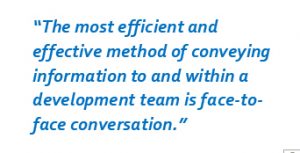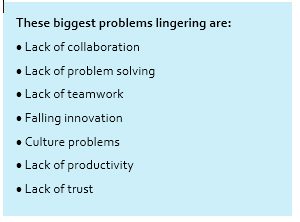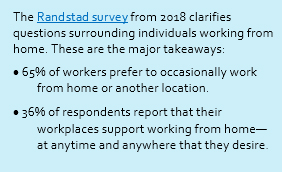A practical approach to building culture in a modern work environment

Working as a Lead or Manager or simply being a team leader has always had its pitfalls. Today they are more numerous, multi-faceted and more perilous for you.
Consider “dotted line” managers. You may, for example, be responsible for a technical team but there may be a Tech Lead facilitating the technology decisions and a Scrum Master running day-to-day operations. Where and how do you fit in? How do you encourage a certain culture when that could be undermined by other managers with different agendas?
Technical decision? Easy, even when they are hard. Removing roadblocks for a Scrum Master to solve? Potentially complicated but the “focus on delivering customer value,” bulldozer always wins. Getting people to talk to each other? For a leader or people manager? Sometimes impossible. Keeping people productive? This needs a stern or gentle touch, a seat change or a video meeting instead of simply a phone call. All with a smile. When dealing with people’s behaviors is involved: things can be tough!
The best way to have a successful product release is to have teams that communicate and, simply, get along. Teams also need to be productive and be able to remove roadblocks. It is best if they can do this themselves—without higher management. If they are able to problem solve without an overseer, it is a sign of good culture and training, not a possible disconnect between employees and management. You need to trust them and they need to trust you, so it’s your job to build trust within the team. To get all this done, a strong team culture must be in place.
Talking about corporate culture is far too vast of a topic. Rather, in this article, we are keeping a narrow scope and addressing only team culture. We understand they are related but we are not concerned with corporate culture today.
Teams
What is a team? The notion of a team is entirely different today even from just a few years ago. Agile turned “teams” on its head in comparison to the traditional siloed engineering handoff days. Teams today are expected to be motivated, engaged, lean, agile, efficient, and collaborative. All of these expectations can equate to a tall order.
To add to this, the team itself is becoming more remote and distributed. For example, you may go a full release cycle without seeing the whole team face-to-face. This is a common trend and it can be difficult to grasp.
It’s conventional wisdom that being a manager of a team in the same place at the same time is easier. There are three aspects that would be easier if everyone was in the same place at the same time, these are communication, collaboration, and meetings.

But this is far from the reality of today’s work environments. Even when every team member is in the same office, communication can be tough; there can be a lack of collaboration that every development method relies on today. There can be office politics and bad team culture. Furthermore, having a distributed staff that are in different time zones or working from home can exacerbate this. Most of us today do not have much control over who is part of our team.
The notion of a team today amounts to some staff being in the office with you. Other parts of your team may be working from home, some may be working at other corporate office sites—domestically and internationally. Then you may have some work that is outsourced and this is when time zones come into play. The perception of a team is constantly evolving and expanding. How do you lead them? How do you manage them?
Principles Behind the Agile Manifesto

For many leads/managers, we are no longer able to even discuss not having remote and distributed teams. It is a fact of work life today. For other teams, corporate policies are limiting “work from home,” or trying to bring people back into the office altogether. But I don’t know of any large or medium-sized organizations that are not using distributed work teams. Whether it is in multiple corporate offices, or internationally, including outsourced, these are all forms of distributed work teams.
Building a communication infrastructure and supporting collaboration for a team can be tough. Treating each other fairly can be tough. Not giving preferential treatment to the local team that you see every day, over the distributed team, can be tough.
Team Problems and Collaboration
Now that we’ve gotten a grip on the differential notion of a modern-day team. We can move on to understand that for the present, this is the norm. Although we can shake the evolution as being a trend, there are problems that persist.MH moved
Each of these components rely on communication. A lack, or failure, in any of these areas are linked to issues in communication. Let’s isolate collaboration, this word is very often used in development culture today. Agile, Scrum, DevOps, and other relevant topics are reliant on collaboration. You don’t have to be doing DevOps to know how important collaboration with Ops/IT is to successful deployment.

Collaborate is not just an appealing word. On a team, collaboration is asking questions, interacting, and getting everyone on the same page. It is problem-solving with another person and seeking innovative methods for obtaining maximum efficiency. It is multiple people searching for easier, faster, innovative ways to get something done or solve a problem. It can be simply sharing information. Collaboration increases productivity and removes roadblocks: two heads are always better than one.
It extends to sharing, learning, and teaching to build cross-functional skills, having group ownership of code (XP Principle), to help junior staff, and to innovate. Even just bouncing ideas off of each other initiates problem solving by getting people to talk and listen.
You may need to assign collaboration, especially with distributed teams. It can be done by simply saying: “AJ, please talk to Kim about this,” or, “I want you all to have another meeting on Topic X and get back to me on the solution.”
Conflict can be a sign of great collaboration. Different ideas about the same topic or problem is a start. It is key that you have a culture statement in place to ensure that it doesn’t cause unwarranted tension.
Instill in the team to not take conflict personally, to be fair in their criticisms, and remind them that the aim of criticism is never to humiliate. Don’t take things personally, and never embarrass anyone. Ever.
Culture
I have referred to culture many times in this column from DevOps culture to offshore cross-cultural communication to culture for knowledge workers and millennials.
Establishing culture is difficult, but it is a major aspect of being a leader and manager. Managing against culture standards can often be seen as policing and is also difficult. You can’t let it become the elephant in the room. It has to be addressed. I want to take a deeper look at what culture is and some examples. For the sake of this discussion, I am presenting a hypothetical culture statement—right or wrong, good or bad—it doesn’t matter. It’s an example and we will talk about its inclusion and omissions for the sake of discussion.
Hypothetical Culture statement (with purposeful omissions-if it were perfect it would not be a fun example):

I hope most of these are obvious at this point, but let’s dissect a few points using XP’s (eXtreme Programming) Values.
Respect: Everyone gives and feels the respect they deserve as a valued team member. Everyone contributes value, even if it’s simply enthusiasm. Developers respect the expertise of the customers and vice versa. Management respects our right to accept responsibility and have autonomy over our work.
Courage: We will tell the truth about progress and estimates. We don’t document excuses for failure because we plan to succeed. We don’t fear anything because no one ever works alone. We will adapt to changes whenever they happen. Although these XP values have good points, there are problems that lie within them. I found the following points to be problematic.
Respect: A major component of respect is being present and listening during meetings, phone or video. Do not mute and check out. Meetings are a time for people to speak up and collect information. To be, or appear, as absent is disrespectful to the entire room. How do we police this? It’s complex.
I wonder how Yahoo is doing with their mandatory “in-office’ work time? Many people in Silicon Valley postulated that it was a cheap way to execute a mass-layoff. In lieu of Yahoo providing severance packages for firing employees, they pushed their employees to quit, thus rendering severance packages obsolete. It was cheaper for Yahoo.
It sounds easy and simple but be cautious about treating people differently according to their sex, age, cultural background, and proficiency in the language of communication. In this case, we need to go beyond the basics of discrimination and stretch to discuss favoritism and preferential treatment.
For example, in a distributed team, where a country is seen to have a preference for ‘alpha males’ be managed by an unmarried, assertive American woman with a shaved head. Respect means different things to different people. You may face a cross-cultural wall; you need to work with the distributed team on respect. Be careful not to cater to anyone groups cultures, act in what is in the best interest of the business.
What happens when a group of men continues to interrupt or talk over or mansplain to a woman? This will ruin team dynamic faster than you can say, “globally distributed team.” Culture can be a problem. 
Set the expectation during meetings that you expect equal participation—even simply paying attention, from people working from home as much as with team members sitting around a common table. Good luck.
Even if you have a great team dynamic, where people in your company’s remote offices, working from home, and offshore outsourced teams with the aspect of everyone being treated equally, simple problems like checking out during meetings will collapse essential communication.
We are all working in technology, but not all of us are at the same technical level. We want to have junior people grow, a Dev to have specific technical experts growing cross-functional knowledge, we want to have domain experts, and subject matter experts grow in their technical knowledge. You cannot use technology as a weapon to put people down or shut them up.
Culture statements are alluring but the process for establishing a statement can turn you into a Political Correctness Police (aka the PC Police). Which is something that no one wants to be perceived as. In all, culture seems easy to attain but the reality is that it’s difficult.
Purposeful Omission from a Culture Statement Example
Let’s say, “not interrupting people,” sounds like a good culture idea. But maybe not.
For the sake of this argument, I want a culture with fully, freely flowing ideas, fast brainstorming, and communication without having a brainstorming meeting. I want to have problem-solving where people can feed off of each other’s ideas rapidly solve problems in real-time and collaboratively.
I am of the opinion that the formalization of “not interrupting people,” is unnatural and shuts down the natural thought process. It badly affects the communication infrastructure and the flow of ideas. Thus, inadvertently shutting people down, delaying innovation, and hindering creative problem-solving. And you may be of the completely opposite opinion– and that is fine. Culture is not easy.
Meetings
Meetings may sound like a redundant topic. It’s obvious but it is always worth repeating. Meetings must be effective, whether it is one-on-one, face-to-face, or on a video call. With a variety of team types (remote, home, distributed, and international), the meetings must be lean and efficient. Meetings need to have a purpose and be as short as possible.
Unengaging meetings result in people “muting,” or buying movie tickets, reading news and unrelated stories, chatting with friends (online and in-person), and generally not paying attention—at all.
There are currently funny TV commercials from Geico and the FedEx Cup in the US about conference call “inside” jokes and misunderstandings and not paying attention.
How do we prevent this absence? With good team culture and running short, effective meetings. Hopefully not by policing. Make the time being spent in the meeting is important, move from passing on information to problem solving, and then to collaboration. Treat meetings as a pathway that is used to achieve an endpoint.
You may need to explicitly call on people; this may not be as police driven as you think. Some cultures, whether in the home country or not, do not like to volunteer in a group; culturally, in some countries, woman feel shyer about speaking on a conference call. Which may require you to call on people to facilitate and initiate the conversation. The point is to get people talking.

You
We have discussed so far what you want from the team and establishing “culture.” What does the team want from you?
I am basing many of my thoughts on team building, teamwork and communication, culture along with philosophies like: Agile, DevOps and Lean Software Development. I recently added a survey by Tech HR recruiting company, Appirio. It is, in whole, an interesting read for today’s leaders and managers.
Let’s look at some survey findings from Appirio’s The Human Touch for Tech Talent 2016.
They refer to the conventional wisdom of “employees leave managers, not companies” as a foundation for employee mindset.
What do employees want?
“If I had to choose one quality of worst boss” as outlined in the study it would be: being emotionally distant and uncommunicative (#1 answer).
Specifically on the human touch:
When asked to evaluate their “workplace personality,” almost half of the respondents (47%) valued transparency and communication far ahead of group recognition, advanced responsibility, individual attention and tokens of appreciation.
Tech workers value success as a team and having emotional safety at work (being seen, valued, appreciated). Be an advocate for the team. This is also a theme from Paul Glen’s groundbreaking book: Leading Geeks . Have their back. Communicate a lot and then more. Thank them. Thank you is free. Say it a lot.
Now do all this without being police? And when I say that, I mean both process police and PC police are difficult.
Being a modern, successful manager and leader is very difficult. You have to be able to establish a real and useful team culture that gets people to buy-in and adhere to it. Also, to be an advocate and friend whilst being fair and policing when needed. You’ll need a lot of luck with this.
Summary
Being a leader of a modern tech team can be difficult. Begin by understanding the nature of modern teams. You need specific skills for fostering and empowering a self-forming team that is greatly distributed. There are specific things to watch out for with team members in remote offices, working from home and offshore, both internal staff and outsourced.
Your best solution starts by training on and building a team culture to foster collaboration. Then, managing against your culture statement. Treating everyone with respect sounds easier than it is, it’s complicated. The phrase may have different cultural interpretations. Effective culture does not happen by itself.
Meetings today of whatever type that you arrange are the fulcrum of collaboration, respect, communication, problem solving, creativity, and a good spirit to foster each of these. Make sure meeting time is perfectly used, productive, involves each and every team member, and helps the team. Human interaction makes work positive and beneficial. Support and foster it to cultivate growth and lead successful teams.
Request More Information





















